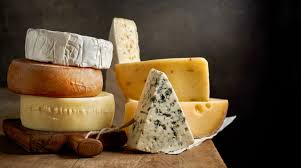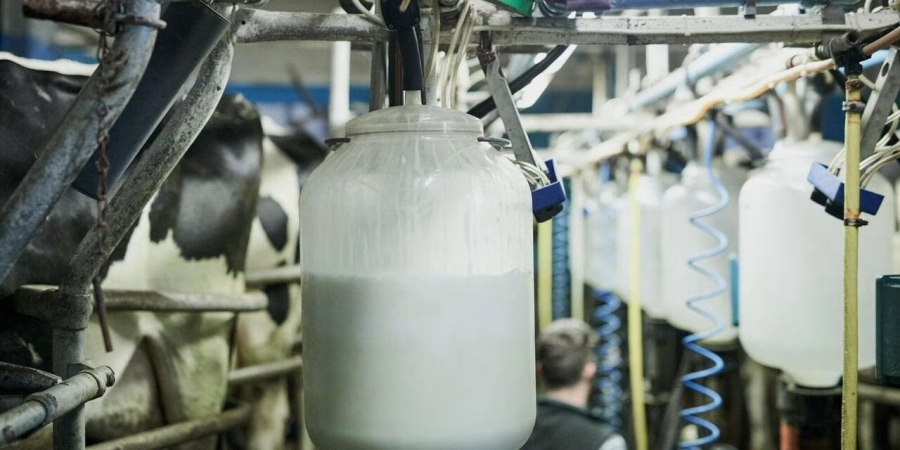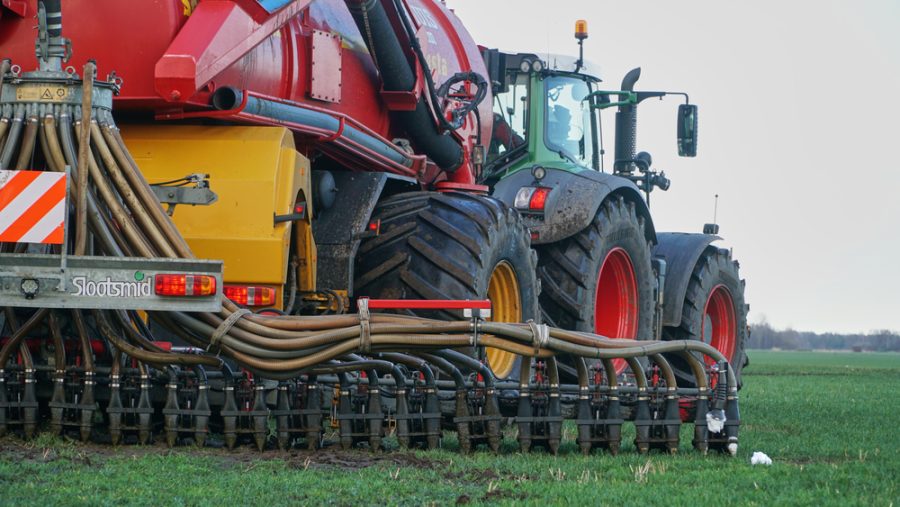Learn about the Senate’s $5 million increase for the Dairy Innovation Initiative and how it empowers farmers and processors. Interested in the effects on your local dairy sector? Find out more.

The Senate Appropriations Committee has raised funding for agricultural programs for fiscal year 2025; $5 million has been added to the Dairy Business Innovation Initiative (DBII), now valued at $17 million. This boost seeks to foster dairy sector innovation and modernism, supported by Wisconsin Senator Tammy Baldwin. Grants, which help farmers and processors in modernization, equipment acquisitions, and value-added dairy products, at least half of DBII money is set aside for Underlining the vital importance of agriculture and dairy innovation in boosting rural communities, improving the food supply chain, and therefore fostering local economies, this increase is part of a larger $27 billion agricultural budget, $821 million more than in 2024. DBII funds promote new on-farm processing businesses, modernization, and growth, helping farmers better control their output and market dynamics.
Shaping Agricultural Futures: The Strategic Role of the Senate Appropriations Committee
Federal monies—including those for agriculture—are distributed by the Senate Appropriations Committee. Changing suggested budgets helps the committee ensure resources satisfy national requirements. This method significantly affects agricultural financing, allocating funds to vital projects such as the Dairy Business Innovation Initiative (DBII).
Originally established under the USDA by the Agricultural Marketing Service (AMS), DBII seeks to increase development among dairy farmers and processors. To help industry modernization and diversification, it offers grants, technical assistance, education, and events. For dairy producers and processors, this program provides financial support for value-added dairy products, equipment, projects, and financial aid. Using strategic allocation of DBII funding, rural economies are strengthened, a consistent food supply chain is guaranteed, and local employment and investment are promoted.
Senate Proposal for Fiscal Year 2025: A Significant Boost for Agriculture and Dairy Innovation
Reflecting a significant $27 billion investment in agricultural programs, the Senate’s Fiscal Year 2025 allocations indicate a $821 million increase over last year’s budget. With a $5 million rise, the Dairy Business Innovation Initiative (DBII) stands out with total funding until 2025 of $17 million. Emphasizing her dedication to rural economies and the crucial role the DBII plays in promoting industrial development and modernization, Wisconsin Senator Tammy Baldwin has been instrumental in proposing this increase.
The Additional Funding from the Senate Appropriations Committee: A Catalyst for Dairy Industry Modernization and Economic Resilience
The Senate Appropriations Committee’s funding increase, mainly via the Dairy Business Innovation Initiative (DBII), greatly helps dairy farms and processors. This financial help supports modernization initiatives by allowing farmers to update infrastructure and simplify operations, improving the quality of dairy products.
Grants also help with essential equipment acquisitions, such as cheese vats and pasteurizers, increasing production and enabling the development of value-added goods. This creativity strengthens market positions, enables dairy companies to diversify, and satisfies new customer needs, promoting rural economic development.
Good DBII fund distribution guarantees maximum economic effect, therefore boosting the strength of rural economies and the resilience of the national food supply chain.
Success Stories from the Dairy Business Innovation Initiative (DBII) Program Highlight Its Substantial Impact on Both Individual Farmers and Broader Rural Communities
Dairy Business Innovation Initiative (DBII) success stories show how much it affects individual farmers and rural areas. For example, a Vermont dairy farm set up an on-farm cheese-making plant using DBII money, increasing local employment and profitability. Similarly, a Wisconsin farmer modernized tools and developed a line of handcrafted cheeses and yogurts to satisfy customer demand for upscale goods and provide fresh income sources.
Support from the DBII helps communities maintain financial gains, lowers transportation demand, and advances sustainability. The knock-on consequences include educational opportunities based on best practices, underlining the need for ongoing dairy industry investment.
Ensuring Accountability and Maximizing Impact: The Rigorous Process Behind DBII Funding Allocation
Careful funding distribution under the Dairy Business Innovation Initiative (DBII) highlights the program’s dedication to responsibility. Grant applications invite farmers and processors to submit bids a few times a year, and professionals from several fields thoroughly evaluate them.
Management of these programs depends critically on the Center for Dairy Research (CDR) and State Departments of Agriculture. They evaluate every concept’s feasibility, effect, and inventiveness potential based on sustainability, economic advantages, and compatibility with agricultural objectives. Complete awareness.
Once grants are given, ongoing control guarantees efficient use of the money. Site inspections, audits, and regular reports help monitor grant condition adherence and development. This strategy guarantees openness and builds trust among legislators, USDA officials, and stakeholders. Every award money stimulates creativity and helps dairy producers and processors, strengthening program credibility.
DBII’s Next Phase: Amplifying Impact and Navigating Congressional Funding Dynamics
The evolving Dairy Business Innovation Initiative (DBII) will have an increasing influence. Mid-August marks the opening of the grant application session, which provides $100,000 grants to assist in modernizing operations or creating new value-added dairy products supporting farmers and processors. The Wisconsin Cheese Makers Association website or the DBI page run by the Center for Dairy Research provides comprehensive details and application instructions.
Efforts to get extra House of Representatives funds meanwhile are still ongoing. The House’s first offer is $9 million; the Senate has suggested raising DBII financing to $17 million for 2025. Under the direction of Wisconsin Senator Tammy Baldwin, supporters are trying to persuade both parties to match House financing to Senate recommendations. The program’s continuous expansion and capacity to provide significant outcomes depend on this.
The Bottom Line
The Senate Appropriations Committee’s choice to increase funding for dairy projects shows a strong will to support rural economic resilience and agricultural innovation. This higher funding will improve programs for crucial nutrition, agricultural research, and the Dairy Business Innovation Initiative (DBII). Funds for the DBII—five million dollars more—will support new value-added dairy products, equipment acquisitions, and modernization initiatives. These purchases help local businesses, provide employment, and empower farmers. We appreciate Senator Tammy Baldwin and bipartisan support in Congress for guaranteeing this cash infusion for the dairy sector. Their work emphasizes how significant wise investment is to maintaining American agriculture. Transparency and efficient use of money will ensure that initiatives like the DBII keep flourishing and helping the agriculture industry and society. Let’s remain involved and help projects enhancing our agricultural basis and thus promoting a sustainable food chain.
Key Takeaways:
- The Senate Appropriations Committee proposed a significant increase in agricultural funding, totaling more than $27 billion for Fiscal Year 2025, an increase of $821 million from 2024.
- Rebekah Sweeney from the Wisconsin Cheese Makers Association highlighted that additional funding includes support for nutrition programs like WIC and SNAP, agricultural research, and food safety positions at the FDA.
- A major highlight is the $5 million increase in funding for the Dairy Business Innovation Initiative (DBII), raising the total investment to $17 million for 2025, largely advocated by Wisconsin Senator Tammy Baldwin.
- DBII plays a vital role in providing grants to dairy farmers and processors for modernization projects, equipment purchases, and development of new value-added dairy products.
- The program ensures judicious use of funds, which strengthens farmers’ and processors’ operations, ultimately contributing to the economic resilience of rural communities.
- With this increased funding, DBII expects to open new grant application opportunities, allowing more dairy businesses to enhance their operations and innovate effectively.
- The bipartisan support in the Senate underscores the recognized value and success of the DBII program, fostering hopes for similar traction and funding approval in the House.
Summary:
The Senate Appropriations Committee has increased funding for agricultural programs for fiscal year 2025, with $5 million added to the Dairy Business Innovation Initiative (DBII), now valued at $17 million. The increase aims to foster dairy sector innovation and modernism, supported by Wisconsin Senator Tammy Baldwin. DBII funds promote new on-farm processing businesses, modernization, and growth, helping farmers better control their output and market dynamics. Established under the USDA by the Agricultural Marketing Service (AMS), the DBII offers grants, technical assistance, education, and events to help industry modernization and diversification. The additional funding supports modernization initiatives, allowing farmers to update infrastructure, simplify operations, and improve the quality of dairy products. Grants also help with essential equipment acquisitions, increasing production and enabling the development of value-added goods. The DBII program has a substantial impact on individual farmers and rural communities, helping maintain financial gains, lower transportation demand, and advance sustainability.













